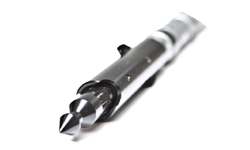The aerospace fasteners industry evolved alongside the aerospace industry which witnessed a continuous development of aircrafts from commercial, military and business airplanes to ballistic missiles and rockets. The global aerospace industry is influenced by several economic and political factors, as also by regional and global dynamics which play a major role in steering the direction of growth. The aircraft manufacturing industry relies heavily on the health of the airline industry which in turn is influenced by factors such as economic activity, air travel demand, government regulations and regional issues among other reasons. The aerospace sector uses a variety of fasteners such as hi-locks, bolts, nuts, washers, rivets, collars, screws, spacers and pins. All these fasteners are required to be certified by stringent standards governing usage in each end-use sector, ensuring high degree of entry barriers for new entrants in the industry. Aircraft fasteners are generally identified by the designations, AN, NAS and MS, which also specify their uses. The technologically sound, high-performance specialty aerospace fasteners and application specific, standard fasteners are poised to achieve robust growth over the coming years. Resurgence of Aircraft Manufacturing.and improved military expenditure is expected to boost market prospects. These fasteners are also finding increasing uses in new markets including non-military applications and nanoaerospace. There is also a significant demand for high performance fasteners from the wind energy industry, where large diameter and high tensile fasteners are required for wind turbines. Further, governmental initiatives, in the form of increased investments in non-building construction, military and commercial aircrafts and satellites, are fueling demand for aerospace grade fasteners. The economic recession within the aerospace industry prolonged for three full years and weighed down significantly on several manufacturing industries, triggering a period of serious downslide in air travel and aircraft delivery volumes. Major airline companies including Boeing and Airbus recorded a sharp decline in aircraft manufacturing and resultantly a decline in demand for aerospace grade fasteners. Even as the industry staged a gradual recovery, the Euro sovereign crisis upset the already fragile stabilization process, particularly in several key European countries. Fleet expansion programmes were shelved in several markets of France, Italy, UK, Spain and Germany on account of rising inflation and tight fiscal budgets. Dwindling passenger volumes, higher fuel prices, carbon taxes, user fee and stringent regulations continue to be some of the other issues of immediate concern within the aerospace industry. However, after a depressed North American market and delivery delays in 2010, the fastener OEM sales witnessed a slow turnaround in 2011, although the growth remained largely below average. Manufacturers witnessed a spike in orders both from commercial equipment suppliers and fastener distributors. Several fastener OEMs also stocked up raw materials such as bar, wire and coil in anticipation of a further rise in demand. In particular, fasteners suppliers to the after-market and defense aircrafts sectors recorded a generous swell of orders. The report profiles 100 companies including many key and niche players such as; - 3V Fasteners Company Inc. - Alcoa Fastening Systems - Allfast Inc. - B&B Specialties Inc. - B/E Aerospace - Emhart Teknologies LLC - LISI Aerospace S.A.S - National Aerospace Fasteners Corporation - Nylok Corporation - Precision Castparts Corp. - Cherry Aerospace - TFI Aerospace Corporation - TPS Aviation Inc. - TriMas Corporation - Monogram Aerospace Fasteners - Wesco Aircraft Holdings Inc. This report analyzes the worldwide markets for Aerospace Fasteners in US$ Million. The report provides separate comprehensive analytics for the US, Canada, Japan, Europe, Asia-Pacific, Latin America, and Rest of World. Annual estimates and forecasts are provided for the period 2010 through 2018. Also, a six-year historic analysis is provided for these markets.
J&R Metalwork-Make Business Simple and Enjoyable
Cooperate with J&R Metalwork,find what will impress you and enjoy comfortable shopping experience
Geologic Drill Tool--Make your simple drilling operation
Downhole tools and accessories on the ground will bring a beautiful drilling experience.
Synthetic Diamond
Synthetic diamond Grits for amazing cutting or polishing tools--Synthetic diamond mono crystal for carving tools --Synthetic diamond mono plat for LED polishing







